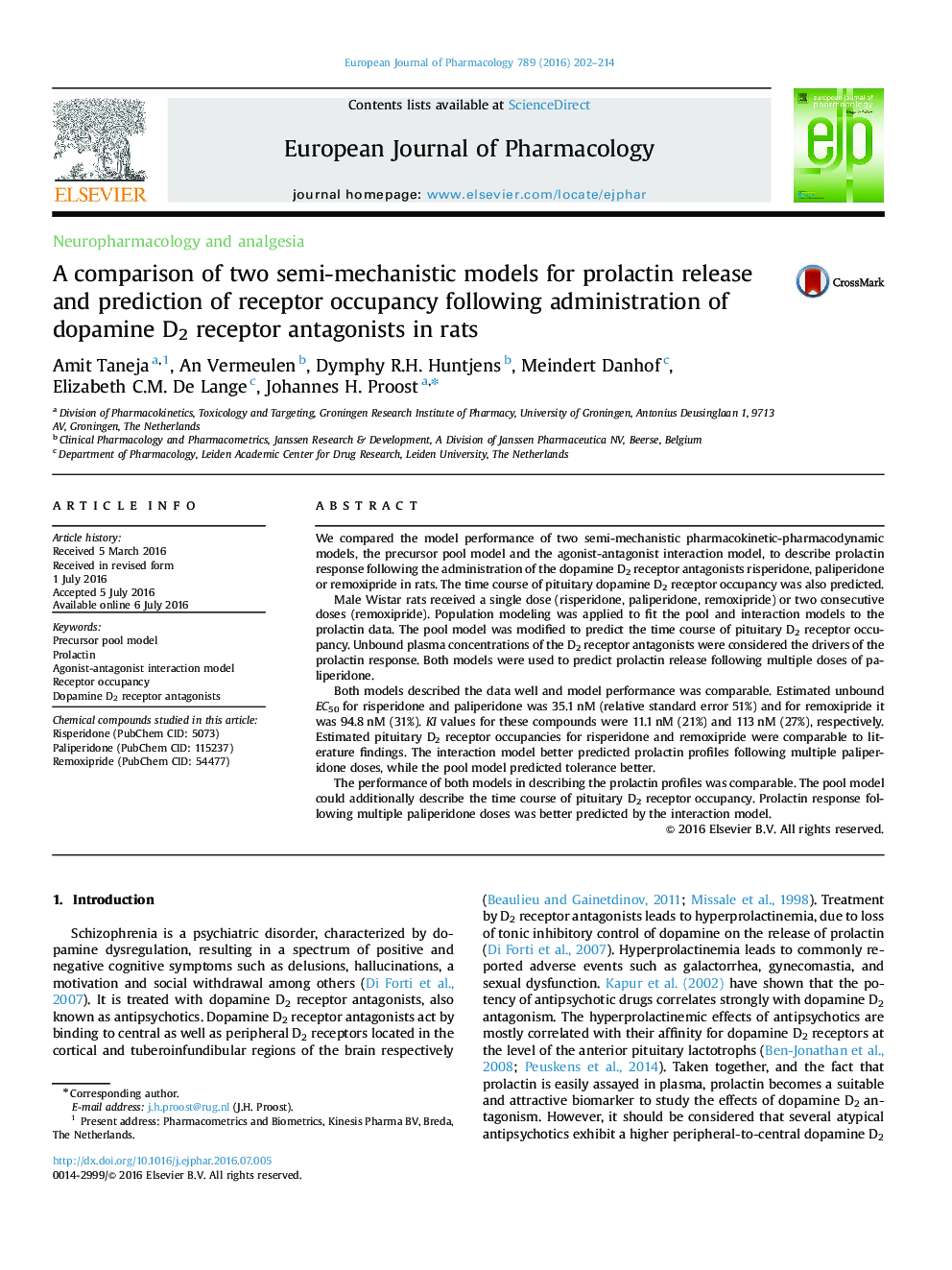| Article ID | Journal | Published Year | Pages | File Type |
|---|---|---|---|---|
| 2530824 | European Journal of Pharmacology | 2016 | 13 Pages |
We compared the model performance of two semi-mechanistic pharmacokinetic-pharmacodynamic models, the precursor pool model and the agonist-antagonist interaction model, to describe prolactin response following the administration of the dopamine D2 receptor antagonists risperidone, paliperidone or remoxipride in rats. The time course of pituitary dopamine D2 receptor occupancy was also predicted.Male Wistar rats received a single dose (risperidone, paliperidone, remoxipride) or two consecutive doses (remoxipride). Population modeling was applied to fit the pool and interaction models to the prolactin data. The pool model was modified to predict the time course of pituitary D2 receptor occupancy. Unbound plasma concentrations of the D2 receptor antagonists were considered the drivers of the prolactin response. Both models were used to predict prolactin release following multiple doses of paliperidone.Both models described the data well and model performance was comparable. Estimated unbound EC50 for risperidone and paliperidone was 35.1 nM (relative standard error 51%) and for remoxipride it was 94.8 nM (31%). KI values for these compounds were 11.1 nM (21%) and 113 nM (27%), respectively. Estimated pituitary D2 receptor occupancies for risperidone and remoxipride were comparable to literature findings. The interaction model better predicted prolactin profiles following multiple paliperidone doses, while the pool model predicted tolerance better.The performance of both models in describing the prolactin profiles was comparable. The pool model could additionally describe the time course of pituitary D2 receptor occupancy. Prolactin response following multiple paliperidone doses was better predicted by the interaction model.
